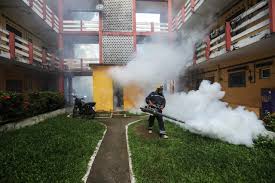The World Health Organization (WHO) has sounded an urgent alarm over the growing risk of a global chikungunya outbreak. The virus, which caused a widespread epidemic in 2004–05, is once again emerging as a serious global health threat, as new cases continue to surge across multiple continents.
Regions in the Indian Ocean, East Africa, South Asia, and Europe are witnessing a resurgence of chikungunya infections, prompting health authorities worldwide to intensify monitoring, prevention, and awareness campaigns.
Over 5.6 Billion People at Risk
The scale of the threat is immense. Chikungunya has been detected in more than 100 countries, placing an estimated 5.6 billion people nearly two-thirds of the world’s population at potential risk. The virus spreads primarily through the Aedes aegypti and Aedes albopictus mosquitoes, both known for their aggressive daytime biting patterns.
Health officials warn that if proactive measures are not taken, the virus could follow the same devastating trajectory as it did in the mid-2000s, when it rapidly spread from island nations to large urban centers across Asia and Africa.
Symptoms and Severity of the Virus
Chikungunya is characterized by a sudden high fever, intense joint pain, muscle aches, fatigue, and rashes. While the virus is rarely fatal, the joint pain can be debilitating and may persist for weeks or even months in some cases. The elderly, children, and individuals with preexisting health conditions are particularly vulnerable to complications.
There is currently no specific antiviral treatment or vaccine for chikungunya. Management is limited to supportive care, including pain relief, hydration, and rest.
Global Spread Reflects a Pattern of Concern
Recent outbreaks have been reported in island territories and coastal regions, which are often the first to be affected due to their climate and proximity to mosquito breeding habitats. These include areas in the Indian Ocean, East Africa, and parts of South and Southeast Asia, as well as localized outbreaks in European countries such as France and Italy.
Experts are concerned that the seasonal activity of mosquitoes and climate change could facilitate the virus’s continued expansion into new regions including those previously unaffected.
No Cure Only Prevention
With no cure currently available, prevention remains the only effective defense against chikungunya. Health authorities are urging countries to immediately implement and intensify the following measures:
- Aggressive mosquito control efforts, including eliminating stagnant water sources
- Public awareness campaigns to educate communities on symptoms and prevention
- Distribution of mosquito repellents and promotion of protective clothing
- Strengthening early detection systems through clinical and lab surveillance
- Training healthcare workers to recognize and report cases promptly
High-risk areas are being advised to increase public health messaging, especially in schools, hospitals, and rural communities.
Europe on Alert
Europe is also on high alert due to the presence of Aedes albopictus, a mosquito species capable of transmitting chikungunya. Authorities there are preparing for the possibility of local transmission during mosquito season, urging residents and travelers to remain vigilant.
Call for Global Coordination
WHO has emphasized the need for coordinated international action to contain the virus. This includes sharing real-time data, harmonizing diagnostic protocols, and mobilizing public health resources.
The organization also stressed that early intervention now could prevent the kind of rapid and uncontrolled spread witnessed in past outbreaks.
Conclusion: A Narrow Window to Act
The warning issued by WHO is not merely cautionary it is a call to action. As chikungunya continues to expand its reach, global and local health authorities must act decisively to mitigate the risk of a full-scale pandemic.
With billions at risk and no vaccine or treatment available, the focus must be on mosquito control, public engagement, and early detection. Communities, governments, and health professionals must unite to prevent a looming health emergency and protect vulnerable populations from this mosquito-borne menace.



Comments (0)
No comments yet. Be the first to comment!
Leave a Comment